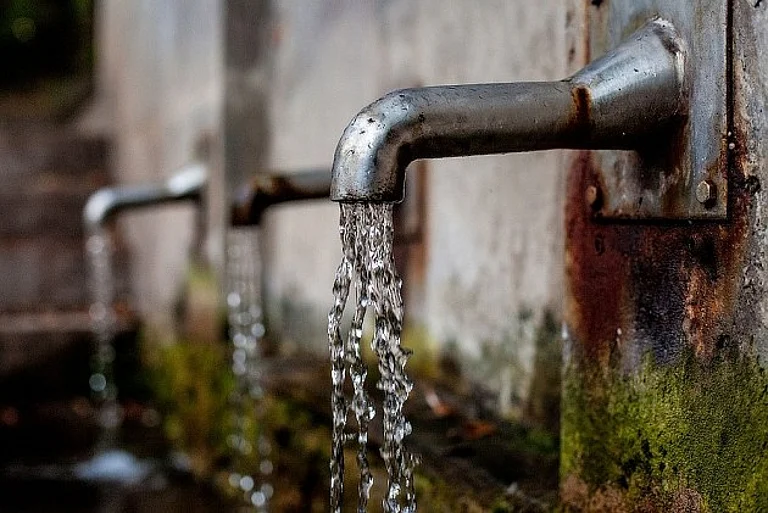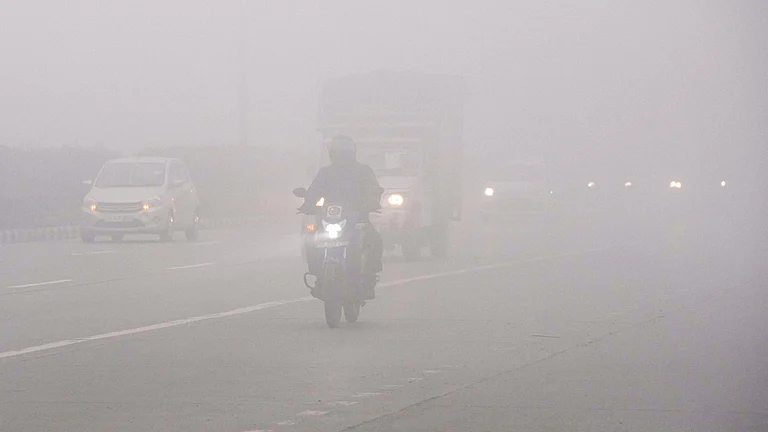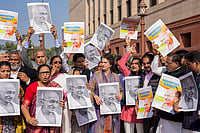It was a lifetime opportunity to serve as the Director General of the National Mission for Clean Ganga (NMCG), a project of spiritual, environmental and cultural importance. From the very beginning, the scope of the Namami Gange Mission was enormous. The Ganga river, which flows through 2,500 kilometres and sustains nearly 40% of India’s population, is much more than a water body. It is a lifeline—spiritually, economically and ecologically. When I joined the mission in 2019, I knew that rejuvenating such an iconic river was not only a monumental challenge but also a responsibility that would demand innovation, perseverance and collaboration across the board.
One of the most critical factors contributing to the now acknowledged success of the mission was our approach to people’s participation. The Ganga flows not just through cities and villages but through the hearts of millions of people. From the beginning, we recognised that any lasting change had to come from the people themselves. Engineering solutions alone would not suffice.
Imbibing the concept of Arth Ganga put forward by the Prime Minister and Chairman of the National Ganga Council in its first meeting in Kanpur, which aimed for an economic bridge between the people and the river, we consciously pushed for people-centric solutions, without diluting the scope of engineering-centric solutions like sewage treatment plants (STPs) and effluent treatment plants (ETPs).

By providing sustainable livelihoods through afforestation programmes, fisheries, faith-based initiatives like Ganga Aartis and eco-tourism, we ensured that people felt personally connected to the river’s health. This wasn’t just a clean-up initiative; it was a people’s movement.
One of the most telling signs of ecological restoration is the increase in biodiversity elements dwindling in the region. In the case of Ganga, we witnessed the gradual increase in numbers of Gangetic dolphins, a species which can be considered as a vital indicator of the river’s health.

From just 2,200–2500 dolphins, these have increased to over 4400 as reported by a recent study of Wildlife Institute of India (WII). This is due to the success of multiple interventions like improved river water quality, better rescue and rehabilitation by a set of dedicated cadre of Ganga Praharis. This resurgence is a testament to our belief in the power of nature to heal when given the right conditions.
Of course, it wasn’t all smooth sailing. One of the primary challenges we faced was tackling the industrial pollution that continued to plague certain stretches of the Ganga, particularly near Kanpur, which was notorious for its pollution, mainly from leather tanneries. At the heart of the issue was the unregulated dumping of industrial effluents into the river. We took decisive action, closing down non-compliant factories, particularly those in Kanpur.
One of the most telling signs of ecological restoration is the increase in biodiversity elements that were dwindling in the region. In the case of Ganga, there was an increase in numbers of Gangetic dolphins, a species which can be considered as a vital indicator of the river’s health
For industries those were willing to comply, we provided support in the form of financial assistance for construction of Common Effluent Treatment plants (CETPs). In Kanpur, for example, the Rs 750 crore CETP inaugurated by the Prime Minister earlier this year was built with just Rs 25 crore contribution from the industry and the rest was provided by the Namami Gange programme. This facility treats 20 million litres per day (MLD) of polluted water, significantly improving the water quality in the region and has the provision to recover the toxic chromium from the effluents to be reused, thereby reducing cost and preventing accumulation of the toxic waste.
The Kanpur intervention was a prime example of how a cooperative approach combined with regulatory firmness could yield tangible results. The leather industry, a major pollutant in the area, was not only brought into compliance but also encouraged to adopt water-efficient and less wasteful practices by working with international partners and academia. By working closely with local industries, we managed to strike a balance—ensuring compliance while also fostering a spirit of collaboration.
One of our most ambitious interventions was the creation of real-time monitoring systems for the STPs along the river. Through the PRAYAG (Platform for Real time Analysis of Yamuna and Ganga) dashboard, we are now able to monitor the quality and quantity of water flowing in and out of over 300 STPs in the Ganga basin every day, some even every 15 minutes. This level of transparency not only ensured that the STPs were functioning properly but also helped build trust among the public, stakeholders and industries alike. With this system in place, we made significant strides in reducing the inflow of untreated sewage into the river—a crucial factor in the river’s revival.

Perhaps our proudest moment was when Namami Gange was recognised as one of the top 10 World Eco-Restoration Flagships by the UN in December 2022. This global acknowledgment validated our years of hard work and highlighted the project as a beacon of hope for other nations grappling with river conservation. The award wasn’t just about engineering success; it was a testament to the community-driven approach, our work in reversing environmental degradation and the restoration of biodiversity. It was an honour to see the project that started in 2014 grow into a global model for ecological restoration.
The Ganga is more than just a river. It is Ma Ganga, a spiritual symbol, that has been revered for centuries. The cultural and spiritual connection Indians have with the Ganga runs deep, and the task of restoring it was nothing short of a sacred duty. So, it was important to focus not only on the river’s physical health but also to nurture the spiritual and cultural traditions associated with it. Whether it was reviving traditional practices like aartis at various ghats or promoting natural farming along the river’s banks, we made sure that the Ganga was treated not just as a natural resource but as a living entity worthy of respect.
While we have achieved a lot, the work is far from over. The future of the Namami Gange mission lies in ensuring sustainability. Filling up the gap and maintaining the cleanliness of the river is a daily task, and we need continuous vigilance to prevent further pollution. Our focus must now shift towards urban river management plans (URMPs), ensuring that cities along the Ganga and its tributaries develop and implement sustainable practices to keep the river clean. In the coming years, URMPs in over 50 cities are planned, which will be a significant step towards safeguarding the Ganga for future generations.
We have not only restored a river but also reawakened a sense of ownership and pride among the people who depend on it. The Ganga is cleaner, its biodiversity is thriving, and the people along its banks are more connected to it than ever before. Yet, the journey is ongoing, and the challenges ahead will require the same commitment and collaboration that brought us this far.
We must also tackle the looming threats posed by climate change. Fast floods, unpredictable rain patterns and increased pressure on water resources mean that we need to find innovative ways to capture and manage water more effectively. This includes building small water bodies in forests and catchment areas to store and slowly release water, ensuring a continuous flow in the river even during dry seasons. By doing so, we can further protect the biodiversity and ecological balance we’ve worked so hard to restore.
– As told to Arushi Brotia
MORE FROM THIS ISSUE
G. Asok Kumar is Former Director General of the National Mission for Clean Ganga (NMCG)





























